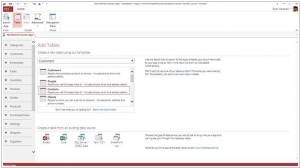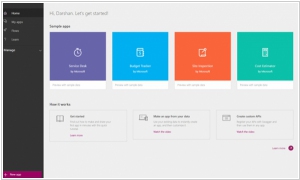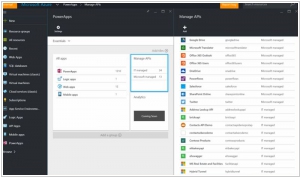Microsoft Access vs Microsoft PowerApps
May 25, 2023 | Author: Michael Stromann
6

Access is now much more than a way to create desktop databases. It’s an easy-to-use tool for quickly creating browser-based database applications that help you run your business. Your data is automatically stored in a SQL database, so it’s more secure than ever, and you can easily share your applications with colleagues.
Microsoft Access and Microsoft PowerApps are both software applications developed by Microsoft, but they serve different purposes and target different user groups.
Microsoft Access is a desktop database management system that allows users to create and manage relational databases. It provides a user-friendly interface for designing tables, forms, queries, and reports. Access is ideal for individuals or small teams who need to create and maintain databases to store and analyze data efficiently. It offers a wide range of features for data organization, manipulation, and reporting, making it a powerful tool for data-driven applications.
On the other hand, Microsoft PowerApps is a low-code development platform that enables users to create custom business applications without extensive coding knowledge. PowerApps focuses on building mobile-friendly, cloud-connected apps that can integrate with various data sources and services. It offers a visual development environment and a vast selection of pre-built templates and connectors, making it accessible to a broader range of users. PowerApps is designed for citizen developers and business users who want to create custom apps for specific business processes or workflows.
See also: Top 10 Low-Code Platforms
Microsoft Access is a desktop database management system that allows users to create and manage relational databases. It provides a user-friendly interface for designing tables, forms, queries, and reports. Access is ideal for individuals or small teams who need to create and maintain databases to store and analyze data efficiently. It offers a wide range of features for data organization, manipulation, and reporting, making it a powerful tool for data-driven applications.
On the other hand, Microsoft PowerApps is a low-code development platform that enables users to create custom business applications without extensive coding knowledge. PowerApps focuses on building mobile-friendly, cloud-connected apps that can integrate with various data sources and services. It offers a visual development environment and a vast selection of pre-built templates and connectors, making it accessible to a broader range of users. PowerApps is designed for citizen developers and business users who want to create custom apps for specific business processes or workflows.
See also: Top 10 Low-Code Platforms
Microsoft Access vs Microsoft PowerApps in our news:
2016. Microsoft launched its no-coding app builder

Microsoft has introduced a new service called PowerApps, enabling individuals to create basic business apps without requiring any coding skills. These apps are compatible with both web and mobile platforms, including the PowerApps apps for iOS and Android. Developing apps in PowerApps primarily involves a drag-and-drop approach. While the service provides an online dashboard, the actual design work is performed using a Windows 10 desktop app. Additionally, PowerApps offers several pre-designed templates for common use cases. Although building new apps from scratch is generally straightforward, it may not be as effortless as portrayed in Microsoft's marketing materials.



